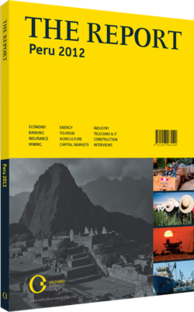A natural choice: Encouraging investment in renewable energy sources
The rationale behind recent legislation to promote investment in green electricity-generating facilities lies not just with its eco-friendly nature, but also in the ability of these resources to operate independently of the national power grid in remote towns and villages in the mountains and jungles. Indeed, roughly 33% of the rural electrification programme will rely on renewable energy resources, particularly wind and solar.
LEGISLATION: “Our Renewable Energy Law 1002 set a participation goal in power production up to 5% for renewable energy, excluding large-scale hydroelectric projects. This objective will be adjusted every five years by the Ministry of Energy and Mines, with the first adjustment corresponding to May 2013,” Ricardo Vásquez Campos, technical advisor for the General Directorate of Electricity, told OBG. In May 2008 Peru passed Renewable Energy Law 1002, which became active in March 2011, to promote investment and development of renewable energy resources. According to Vasquez the country is well on its way to achieving its objective, with 430 MW – nearly 9% of national demand – of renewable resources either operational or in the final stages of development. Tax breaks, as well as guaranteed preferred purchase for 20 years from the national grid, have so far attracted plenty of attention.
WIND: In 2011 MEM estimated that 22,000 MW of potential wind power exists in the country, although it reckoned only 7500 MW of that is technologically and economically feasible at this point. Thus far numerous concessions have been taken out along the Pacific coast and two wind farms are under development. Iberoperuana Inversiones, a Spanish-Peruvian joint venture, is developing two wind farms at a cost of $280m: an 80-MW site in Cupisnique, north of Trujillo, and a 30-MW farm in Talara. Parque Eolico Marcona is also developing a $44m, 32-MW farm in Marcona. All three projects are due to come on-line in 2012.
SOLAR: The development of solar photovoltaic plants has so far been focused in the south where MEM announced four plants were being constructed in Moquegua, Arequipa and Tacna with a combined capacity of 80 MW and estimated to be operational in 2012. Madrid-based T-Solar announced in late 2011 it has plans to develop an additional two solar plants in Arequipa with a combined capacity of 40 MW at a cost of $122m. Another Spanish firm, Solarpack, signed an agreement under the second renewable energy tender from the government to development a 16-MW facility near Ilo by 2014. Solarpack is already developing two solar plants worth $180m, also near Tacna and Moquengua, which are scheduled to begin operations in 2012 with an installed capacity of 40 MW.
GEOTHERMAL: As a young, unstable mountain range, the Andes are home to many active volcanoes spread among four zones, one of which, the Central Volcanic Zone, extends from southern Peru into Chile. MEM estimates that there could be 3000 MW of geothermal capacity in the country, and the pace of investment into exploration has increased lately. In early 2012 the Philippines’ Energy Development Corporation, the largest geothermal producer in the world’s second-largest producing country, teamed up with Australia’s Hot Rocks to explore two geothermal concessions in southern Peru, Quellaapacheta and Chocopata. US-based Mustang Geothermal, which has been exploring four potential sites in southern Peru (Baños del Inca, Pacla, Ninobamba and Condoroma), won three new geothermal concessions in 2011 (Atecata, Coline and Condoroma South). Geothermal resources may not be as vast or easily available as wind and solar, but geothermal does not suffer from the sporadic generation that restricts solar and wind generating capacity.
With various renewable resources available, wind and solar are likely to have the greatest impact on the sector. The potential for geothermal has been established but further studies are needed before quantifying the potential for adding capacity in the short term. The chances of MEM accomplishing its aim of meeting 5% of demand using renewables by 2013 are high, and revision of its objectives is next on the agenda.
You have reached the limit of premium articles you can view for free.
Choose from the options below to purchase print or digital editions of our Reports. You can also purchase a website subscription giving you unlimited access to all of our Reports online for 12 months.
If you have already purchased this Report or have a website subscription, please login to continue.

